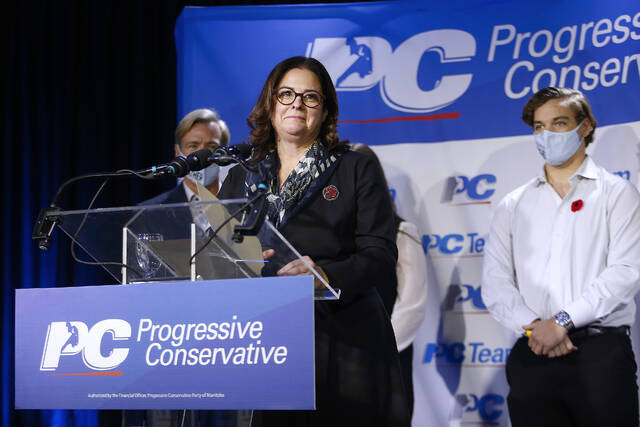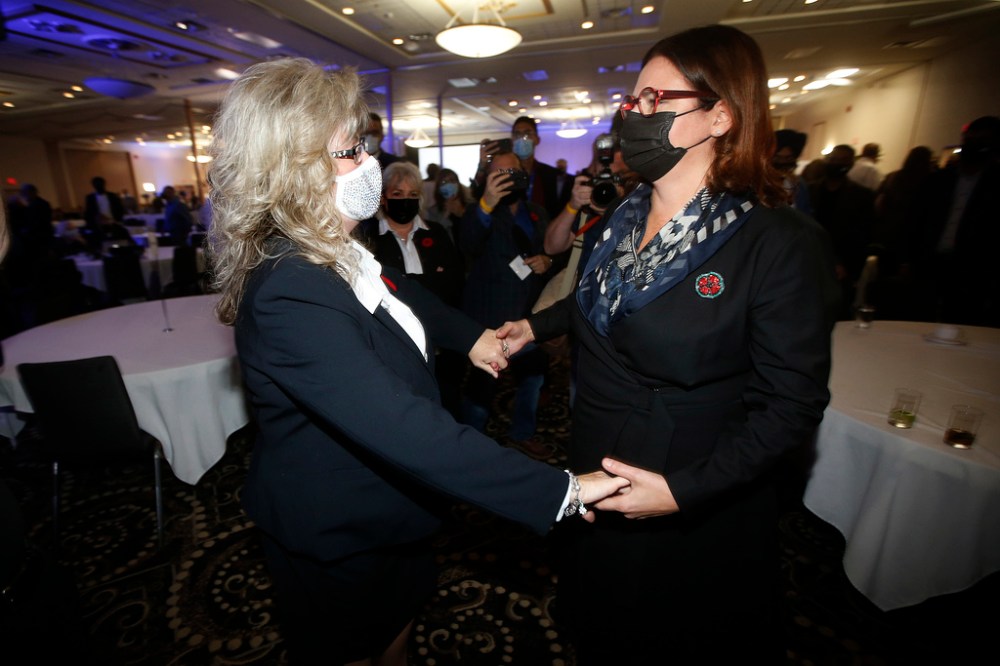Stefanson joins female trailblazers
Read this article for free:
or
Already have an account? Log in here »
To continue reading, please subscribe:
Monthly Digital Subscription
$0 for the first 4 weeks*
- Enjoy unlimited reading on winnipegfreepress.com
- Read the E-Edition, our digital replica newspaper
- Access News Break, our award-winning app
- Play interactive puzzles
*No charge for 4 weeks then price increases to the regular rate of $19.00 plus GST every four weeks. Offer available to new and qualified returning subscribers only. Cancel any time.
Monthly Digital Subscription
$4.75/week*
- Enjoy unlimited reading on winnipegfreepress.com
- Read the E-Edition, our digital replica newspaper
- Access News Break, our award-winning app
- Play interactive puzzles
*Billed as $19 plus GST every four weeks. Cancel any time.
To continue reading, please subscribe:
Add Free Press access to your Brandon Sun subscription for only an additional
$1 for the first 4 weeks*
*Your next subscription payment will increase by $1.00 and you will be charged $16.99 plus GST for four weeks. After four weeks, your payment will increase to $23.99 plus GST every four weeks.
Read unlimited articles for free today:
or
Already have an account? Log in here »
Hey there, time traveller!
This article was published 01/11/2021 (1498 days ago), so information in it may no longer be current.
Manitoba Progressive Conservatives may have felt they were making a bold move on Saturday when they chose Heather Stefanson to be their leader and Manitoba’s first female premier. Their party has not had a female leader since the year 2000, when Bonnie Mitchelson filled in after Gary Filmon quit, until Stuart Murray took over.
Female heads of government are, however, no longer unusual in Canada. Manitoba is if anything a latecomer to the era of women holding the top political jobs.

British Columbia, after all, has already had two female premiers—Rita Johnston and Christy Clark. Alison Redford and Rachel Notley both took turns governing Alberta. Kathleen Wynne ruled Ontario, Pauline Marois ruled Quebec, Catherine Callbeck ruled Prince Edward Island and Kathy Dunderdale ruled Newfoundland and Labrador. Manitoba remained until now as part of the dwindling band of Canadian provinces that never had a female premier. Little remained of the glass ceiling which once blocked women from rising to political leadership in Canada.
Once the Manitoba Progressive Conservatives excluded the male contenders from their party’s leadership race, leaving just Ms. Stefanson and challenger Shelly Glover, it was certain the next party leader and Manitoba premier would be a woman. If there still was a glass ceiling to shatter, it was shattered at that point.
When a party with rising political fortunes chooses a woman as its leader, feminists of all genders can rejoice that she has a chance to ride the wave and provide a role model for women who are wondering if they should think of a career in politics. Sharon Carstairs, for example, had the good fortune to lead the Manitoba Liberal party at a moment when the New Democrats had fallen into disfavour but the Progressive Conservatives had not yet won public support. She led her party from the wilderness to Official Opposition.
There are, however, other circumstances that are less helpful to the cause of women’s equality. The federal Progressive Conservatives, for example, chose Kim Campbell as their leader when Brian Mulroney retired in disgrace. She became prime minister in June 1993, called an election and saw her party reduced to two seats in the House of Commons. It seemed at the time as though the party had put her in charge of a sinking ship.

Events will show whether Ms. Stefanson is living through a Ms. Carstairs moment or a Ms. Campbell moment. She has been given the task of making Manitobans forget Brian Pallister. She has to persuade the public that she never agreed with the policies she supported through two terms of office in Mr. Pallister’s government.
Brian Mulroney waited so long to resign that he left Ms. Campbell just five months to erase his memory. Ms. Stefanson, by contrast, may be able to govern until the summer of 2023 before facing the voters, allowing her ample time to establish a new style and a new policy.
It will be hard, however, to differentiate herself from Mr. Pallister without reminding voters of what they disliked about his government and her role in it. Every time she talks about her wish to consult stakeholders and listen to ordinary Manitobans, she will remind teachers, health-care workers and other large segments of the population how irritated they were in the Pallister years. In these circumstances, a year and a half may not be time enough to bury the party’s past.












